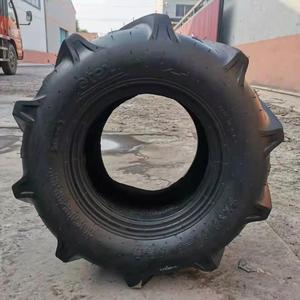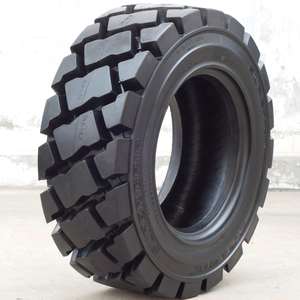(3540 products available)


























































































































































































There are many different kinds of 16.5 tires to suit various uses, and they are classified based on their use case, construction type, and tread design.
Off-Road Tires
These 16.5-inch tires are specifically made for driving on unpaved roads. They have deep, wide treads that can grip loose dirt, mud, sand, and stones. The tires are tough and puncture-resistant. They can easily handle the rough terrain without getting damaged. They are a perfect fit for trucks and SUVs that drive off-road, like in forests or deserts.
All-Season Tires
These tires are made for cars that need good performance in different types of weather. The tread is designed to offer decent grip on dry roads, wet roads, and light snow. While they do not excel in extreme conditions, they are flexible enough for year-round use. This makes them a popular choice for passenger vehicles where changing tires with the seasons is not practical.
High-Performance Tires
For sports cars that go fast, the tires have to match the speed and handling needs. High-performance tires have a rubber compound that provides excellent road grip, especially at high speeds. Their tread design maximizes stability and braking on tracks or winding roads. While these tires perform well in warm weather, some types also have special features for wet conditions.
Load Range Tires
Tires are categorized by their ability to carry weight. The load range D and E tires stand out for heavy-duty use. They are reinforced with extra plies in the sidewalls. This makes them suitable for commercial vehicles like delivery trucks that regularly carry heavy loads. The towing capacity of trucks and trailers is also supported by these 16.5 trailer tires. Proper tire selection based on load range is vital for safety and durability in transporting goods.
Tread Designs
Tires are further divided based on their tread patterns. They may have symmetrical treads with identical patterns across the tire for balanced performance in most conditions. Asymmetrical designs combine different patterns, like a grippy inner portion and a water-channelling outer part, to optimize dry and wet traction. Directional treads are designed to roll in one way, which improves performance in mud and rain. The directional tires are fitted on racing cars and off-road vehicles.
Here are some general specifications of 16.5 tires:
Tire size
A specific aspect ratio, such as 275/75R16.5, indicates the width of the tire in millimeters. In this example, the tire is 275 millimeters wide. The aspect ratio is a percentage that shows how the tire's sidewall height relates to its width. The tire's diameter is measured in inches, and it is a crucial factor for compatibility with the vehicle's suspension and other components. The tire's load index shows the maximum load it can carry, while the load rating indicates the maximum load it can carry. The speed rating indicates the maximum speed at which the tire can perform effectively.
Tread pattern
Tires have different patterns designed for different purposes. Examples of tread patterns include symmetrically arranged blocks, asymmetrically arranged blocks, and directionally arranged patterns.
Tread depth
Tread depth is measured in millimeters or inches. Some 16.5 tires have a minimum tread depth of 12/32 inches or 9.5 millimeters. However, the standard measurement varies based on the tire size and type.
Tire construction
There are two types of tire construction: radial and bias-ply tires. In radial tires, the plies of fabric and steel cords are arranged at 90-degree angles to the tire's centerline. Bias-ply tires have layers of fabric and steel cords woven together at angles less than 90 degrees.
Proper maintenance of 16.5 truck tires is important for safety, performance, and cost-effectiveness. Here are some tips for maintaining them:
Visual inspection
Check for any cracks, cuts, or punctures on the tire sidewall. Look for any embedded objects, such as nails, glass, or sharp stones, in the tread. Also, check for uneven tread wear patterns, which may indicate alignment problems, improper inflation, or other suspension issues.
Regular rotation
Regularly rotating the tires ensures even tread wear. Some common rotation patterns include moving the front tires to the rear and the rear tires to the front and the tire on the rear passenger side moving to the front driver's side and vice versa.
Proper storage
If the tires are not in use, they should be stored in a cool, dry place away from direct sunlight and heat sources. Keep tires away from chemicals, oils, and solvents that can damage the rubber. Properly inflate the tires before storage. Ensure the tires are stacked vertically or hung, preventing flat spots.
Tire balancing and alignment
Tire balancing ensures even distribution of weight around the tire, preventing vibrations and uneven tread wear. Alignment ensures that the tires point in the correct direction. This prevents rapid tread wear and improves vehicle handling.
Tire replacement
When the tread depth reaches the legal limit or is worn out, the tires need to be replaced. This ensures optimal traction, handling, and safety. When replacing tires, consider factors such as tire size, type, and performance characteristics.
When shopping for tires 16.5, understanding the basic components of a tire is important. These include the tire's construction, tread design, and size. Different vehicles need different types of tires based on driving needs. For instance, an off-road truck won't need the same type of tire as a sports car.
Here's how to choose the right 16.5 tires:
Consider the Vehicle
When choosing proper 16.5 tires, it's necessary first to consider the vehicle type. Is it a pickup truck, a large trailer, or an RV? Different vehicles have diverse needs when it comes to tires. For example, a truck used for off-road purposes will need tires that are more rugged and durable than those found in a sedan. Additionally, the weight and size of the vehicle play a crucial role in tire selection. Heavier vehicles require tires with higher load ratings, while smaller vehicles can use lighter-duty tires.
Evaluate Driving Conditions
Driving conditions are a key component when evaluating the proper choice of tires. Factors such as climate (hot, cold, wet, or snowy), road quality (paved, gravel, or off-road), and terrain type (hilly, flat, or sandy) should be considered. For instance, if one lives in an area prone to heavy snowfall, winter tires with superior grip and braking capabilities should be chosen. Alternatively, if most driving occurs on highways or well-maintained roads, all-season tires may suffice for the majority of people.
Understand Tire Specifications
It is important to understand tire specifications, including the size, load rating, and speed rating. Tire size is important because it affects the vehicle's handling, fuel efficiency, and overall performance. Load rating refers to the maximum weight a tire can support, while speed rating indicates the maximum speed a tire can handle. Tires with higher load and speed ratings tend to be more expensive, but they provide better performance and durability.
Budget
When buying tires, always have a budget in mind. However, it is advisable to look at the long-term benefits of the tires rather than the short-term cost. Premium tires tend to outperform budget options. They also last longer and have better efficiency, hence the higher price point.
Mounting 16.5 tires is not as easy as it seems. It requires the right tools and sufficient knowledge about the process. Here are the steps for replacing 16.5 tires:
Tools and materials needed:
Replace the 16.5-inch tire
Q: What are 16.5 tires?
A: 16.5 tires are simply tires with a 16.5-inch wheel diameter. Their uncommon size offers unique advantages for particular use cases. For example, some heavy-duty trucks and specialized off-road vehicles require larger wheels to support specific driving needs.
Q: Can these tires be converted to centimeters?
A: Yes! Tires measured in inches can be converted to centimeters. A 16.5-inch tire equals 41.91 cm. This was calculated by multiplying 16.5 by 2.54, which is the number of centimeters in an inch.
Q: Are 16.5 tires obsolete?
A: While 16.5 tires are less common than they used to be, they are not obsolete. There is still a need for them in some specific applications. However, manufacturers are focusing more on the 17-inch and 17.5-inch options, which offer better performance and compatibility with modern equipment.
Q: Can 16.5 tires be used on any vehicle?
A: No! 16.5 tires are not suitable for all vehicles. They are primarily designed for heavy-duty trucks and specific off-road vehicles. Using them on incompatible vehicles can cause handling, clearance, and safety issues.
Q: Where can these tires be purchased?
A: 16.5-inch tires are still available from some specialty tire suppliers and online marketplaces. Additionally, some B2B buyers can source them from manufacturers who offer customization options. It might be necessary to contact a dealer or look online for hard-to-find sizes.